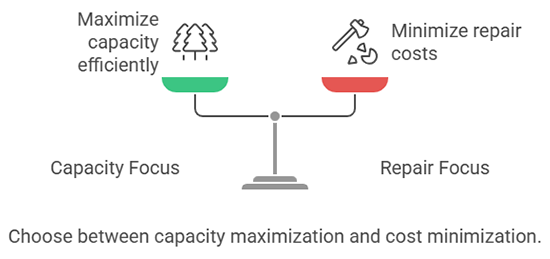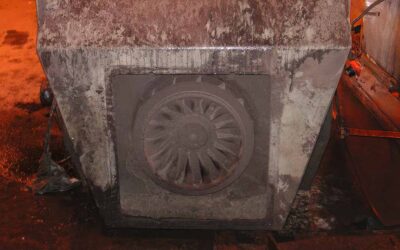I had the fantastic opportunity to work in a gold mine in South Africa. Their mining operations were heavily mechanized, utilizing low-profile loaders, heavy-haul trucks, light-gauge locomotives, and a fleet of cars and trucks. The mine was deep, reaching depths of 8,000-10,000 feet.
Hard rock mining like this is a tough, dangerous proposition. Maintaining the equipment is likewise tough and dangerous. Even in that harsh environment, the basic lessons are important. For example, I asked them the easy question, “What is the mine’s product?” Of course, they could answer, “The mine’s product is gold” (it was, after all, a gold mine).
If gold is the mine’s product, then capacity is the maintenance department’s.
Then, I asked what the maintenance department’s product was. The universal answer was that the maintenance department’s product was a repair to broken equipment. Superficially, that makes sense. When I think about the service department at a new truck dealer, I think in terms of if my truck is broken, they fix it. I paid for the repair. Therefore, they are in the business of repair.
Is the maintenance department of a hard rock mine any different from the service department in a truck dealership? I would say this point is the core difference between struggling maintenance departments and those that excel. The answer to this query also explains the current management focus on cost-cutting.
Rethinking the Role of Maintenance in Capacity Creation
The maintenance department’s product is CAPACITY. It is the capacity to dig up the ore and turn it into GOLD. It is the capacity created by valuable maintenance, not the ability to repair equipment.

What difference does this make? If capacity is the product, then management should focus on optimizing capacity, aiming to maximize capacity with the fewest resources. Since capacity is so valuable, the maintenance resources might be a relatively small input in the calculation.
On the other hand, if truck repairs are the product, then the focus is on reducing the cost of repairs by cutting parts inventory and personnel in the department.
The product of maintenance isn’t repair – it’s capacity.
Let’s get back to mining. If nothing breaks, we might be able to mine enough ore to produce 50,000 pounds of gold a year. However, due to breakdowns and downtime, we only achieve 35,000 pounds per year.
The maintenance budget is estimated to be around $25,000,000 to achieve this level of production. Then the gap is 15,000 pounds per year. That might not sound like too much, but an ounce of gold is worth $3,000, so the gap is worth $700 million every year.
With proactive maintenance and other effective maintenance practices, we may be able to close 15% to 20% of the gap with modest percentage-wise increases in the maintenance effort.
Increases in the maintenance budget, which would be temporary, might amount to 5 to 10%, or $4 million to $5 million per year for a few years. The additional investment may be in systems, increased inventory, extra training, or some combination thereof.
The Economics of Maintenance-Driven Reliability
What does this have to do with industrial maintenance in a modern country? The shift in focus from repairs to capacity can guide you to more intelligent equipment choices, better organization to manage capacity, smoother production, improved tools, and enhanced maintenance systems. If capacity is the name of the game, then there are several areas to consider beyond simply cutting costs.
It starts with a change in attitude toward maintenance. The product of Maintenance is capacity. There is significantly more money to be made annually by the company through increased capacity than through a decade of maintenance budget cuts. The economics of good maintenance can yield a significant return on investment for companies willing to adopt a proactive approach.











